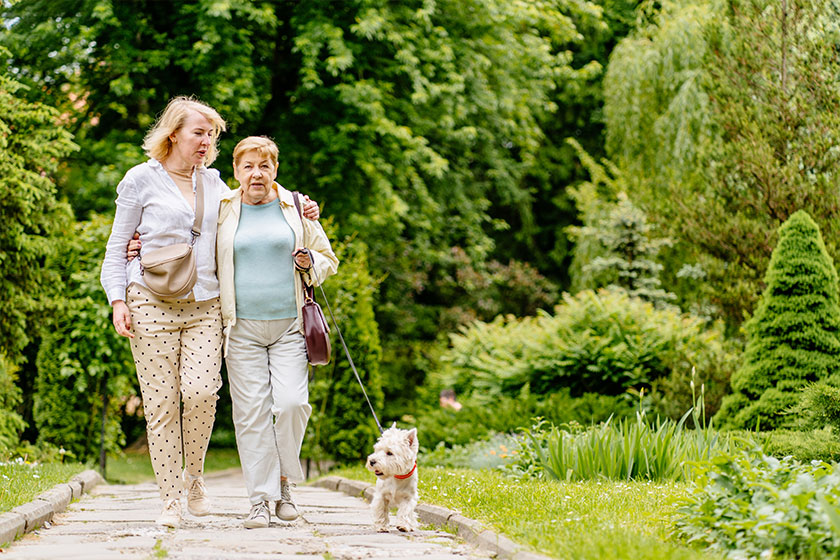Taking your dog on a walk can be a great way to get your pet some fresh air, but it can also be a challenging activity for golden-age adults who may have difficulty climbing steps or maneuvering their dog through narrow spaces. Fortunately, several dogs are walking for seniors tips you can use to ensure that your walks don’t pose any significant dangers. Even so, keep in mind that this will depend on the individual – some elderly pet owners may not be able to safely take their dogs outside because of age-related ailments like arthritis and limited mobility. Here is how you can make sure your walks with your pet are as safe as possible for both of you:
Make Sure That You Can Handle Your Dog
Before you go out for your walk, make sure that you can handle your dog. If you have arthritis or any other physical ailments, consult a doctor before embarking on an extended pet-walking regimen. You also want to make sure that you can handle your dog without injuring him. This is especially important when your dog is young, as young dogs are still developing their strength and size and may therefore be more forceful than older dogs. If you are unsure about your ability to handle your dog, try taking a brisk walk around the block first, just to make sure you don’t injure yourself or your dog.
Don’t Use Too Long A Leash
When choosing a leash for your walk, make sure that it is neither too short nor too long. A leash that is too short may be difficult for you to control and may also pose a risk to you if your dog decides to pull. A leash that is too long may pose a danger to your dog. A leash length is typically about 6-10 feet in length, but many golden age adults have been known to find that longer leashes are more difficult to control. If you find that your leash is causing you or your dog problems, consider using a harness instead.
Beware Of Retractable Leashes
Pet owners often use retractable leashes to contain their dogs when they are in public easily. While this is a helpful feature when you are out with your dog and others might be uncomfortable with his behavior, it is essential to remember that these leashes are potentially dangerous. Retractable leashes are not always easy to detect, which means that your dog could pull quickly on a cord that pulls him into the path of a car, for instance.
Avoid Dark And More Dangerous Places
While most pet owners are only interested in taking their dogs to nearby parks or walking trails, a few may pose a significant risk. If you walk your dog in an open field or along a busy street, you should take extra care to ensure that he is safe. The same is true if your dog ventures into the forest, a swamp, or a construction site. If you have to take your dog into one of these areas, make sure that you are accompanied by another person and take extra precautions.
Allow Yourself Enough Time For The Walk
When you first begin walking your pet, you may be eager to get outside as soon as possible and take your dog for a walk. However, you will want to make sure that you give yourself at least 30 minutes. If you are in a rush to walk your dog, you may rush yourself and end up injuring yourself or your dog.
Treat Your Dog Well
When you walk your dog, be sure to offer him a treat. This will give him something to focus on while you are walking, which will help keep him focused on you and the environment around him. If you have a particularly energetic dog that loves to run, be sure to feed him while he is sitting still. This will help you control him and keep him from causing harm to others.
Know Your Body And Health
Finally, remember that you are walking with a living creature. If you have any health issues, be sure to consult your doctor before taking on this new challenge. While this is important for any golden-age adult who is hoping to stay physically active, it is especially important for pet owners who may be dealing with age-related ailments such as arthritis or limited mobility.







